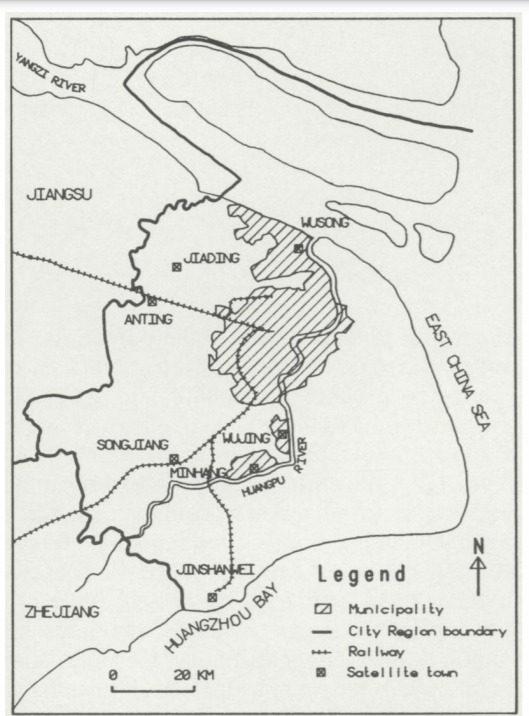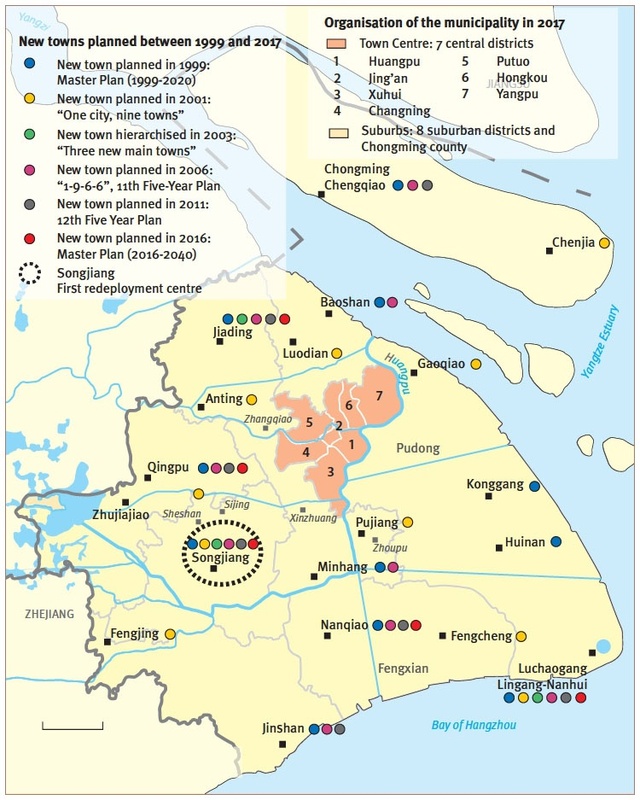Topic: Satellite Cities
A key term in the history of Shanghai's urban planning is "Satellite Cities" or "Satellite Towns." Satellite towns are generally defined as new, large-scale urban settlements built within commuting distance of an already established city or population center. Rather than being self-sufficient, satellite towns are economically dependent on their urban core. The motivations for creating satellite towns are manifold: They can be used to reduce congestion and pollution, ameliorate housing shortages and unemployment, and lessen the strain on underdeveloped infrastructure and public services. As a result, they are often used in developing countries experiencing rapid population growth in their urban areas.
Satellite towns have been central to many of Shanghai's urban plans since the Second World War, including the Shanghai Master Plan and the CCP's plans during the Great Leap Forward. It is important to note, however, that the motivations behind the construction of satellite towns varied from plan to plan. For example, the Shanghai Master Plan used satellite towns as a means of reducing urban congestion. In contrast, during the Great Leap Forward the CCP used satellite towns as a means of sapping human and industrial capital out of cities in order to prevent "over-urbanization" and make them less potentially threatening to the central government. This demonstrates how satellite towns can be both helpful and harmful to cities.
Since the late 1980s, the majority of Shanghai urban plans have included satellite towns to at least some degree. The maps included on this page depict the increased focus on satellite town development in Shanghai's urban plans since the 1990s. While there were only 7 fully functional satellite towns around Shanghai in 1987, between 1999 and 2017 the Shanghai municipal government made plans to develop more than 40 new satellite towns. These modern satellite towns are intended to improve the quality of life of Shanghai's residents and nurture the city's economy rather than undermine its growth.

Satellite Towns in Shanghai City Region 1987
The seven satellite towns around Shanghai in 1987 were Wusing, Jiading, Anting, Songjiang, Minhang, Wujing, and Jinshanwei.
